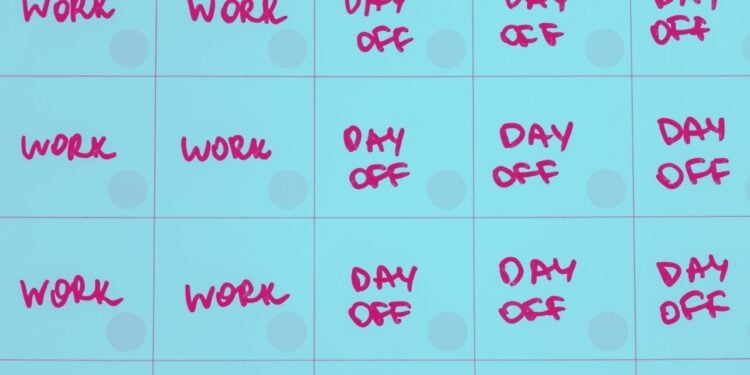- The traditional five-day grind may need a shake-up; extensive studies reveal that long hours do not equate to better output.
- Dr. Dale Whelehan advocates for the 180-100 approach to work, in which employees deliver full productivity (100%) in less time (80%) without a reduction in pay.
- The four-day week conserves individuals’ time and mental bandwidth, all while fueling organizations’ need for creativity and resilience.
The 40-hour workweek is so deeply ingrained in our culture that questioning it still seems crazy. But what if that model is actually doing more harm than good in the modern workplace?
There’s mounting evidence that today’s always-on work culture leads to burnout, lackluster productivity, and disengaged teams. More and more people are wondering if shifting to a four-day workweek could be the solution.
Dr. Dale Whelehan, social entrepreneur and leader at 4 Day Week Global, joined the Allwork.Space Future of Work podcast to provide his insight on how the four-day workweek presents a compelling case for reevaluating productivity norms.
Dr. Whelehan advocates for the 100-80-100 approach, which is the proposal that employees can deliver full productivity (100%) in less time (80%) without a reduction in pay. This methodology suggests that by cutting down on inefficiencies and leveraging technology, organizations can enhance employee wellbeing and sustain output levels.
“There’s a reason why England and the U.S. went from seven days to six days to five days. And it’s because it was recognized that there was an impact on worker health and well being, and also on things like the diminished returns of output versus effort of the worker,” Dr. Whelehan said on the podcast.
The traditional five-day grind may need a shake-up; extensive studies reveal that long hours do not equate to better output. In fact, fatigue sets in after 50-60 hours per week, with sharply diminishing returns afterwards. Likewise, longer days in the office don’t necessarily translate to high-quality decisions and strategic thinking. Decision fatigue is real, making it harder to stay focused as the workday wears on.
Prioritizing work above all else has consequences for mental and physical health. Researchers report that excessive work is linked to heightened stress, insomnia, heart disease, and depression. It’s no wonder that more people are feeling tapped out.
A shorter work week doesn’t mean less productivity
The four-day workweek could strike a better balance, providing the benefits of an abbreviated schedule while sustaining (or even enhancing) productivity. The core premise is that employees receive 100% of their compensation for 80% of the hours, while still delivering 100% of their output.
Overwhelmingly, early adopters have hit their targets. From tech startups to governments agencies, organizations around the world have trimmed work hours while maintaining or improving KPIs like customer satisfaction, costs, output, and profit. Employees come back refreshed, focused, and more engaged.
But it’s not as simple as lopping off a day — thoughtfully restructuring how work gets done is key to making it sustainable. Companies need to examine how to increase efficiency via automation and streamlining processes, and goals and deadlines need to be laid out more deliberately.
Additionally, leadership expands beyond the C-suite. Granting autonomy around when and where work happens empowers employees at all levels to drive positive changes. When people feel actively involved in shaping a supportive and healthy culture, they’re motivated to help make it succeed.
The four-day week conserves individuals’ time and mental bandwidth, all while fueling organizations’ need for creativity and resilience. This might be the next step in the evolution of work — pioneers have demonstrated it’s well worth testing out. What changes might be on the horizon for your workplace?


 Dr. Gleb Tsipursky – The Office Whisperer
Dr. Gleb Tsipursky – The Office Whisperer Nirit Cohen – WorkFutures
Nirit Cohen – WorkFutures Angela Howard – Culture Expert
Angela Howard – Culture Expert Drew Jones – Design & Innovation
Drew Jones – Design & Innovation Jonathan Price – CRE & Flex Expert
Jonathan Price – CRE & Flex Expert











